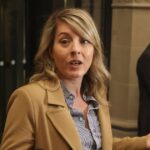The federal government’s announcement of $173 million in funding for five Alberta carbon capture projects marks a significant shift in our province’s energy landscape. As someone who’s covered Calgary’s economic evolution for over a decade, I’ve witnessed the gradual transformation from resistance to embrace when it comes to emissions-reduction technology.
Walking through the industrial areas east of Calgary last week, I couldn’t help but notice the changing skyline – new infrastructure sprouting alongside traditional energy facilities. This latest funding package seems perfectly timed to accelerate that evolution.
“This investment represents a critical step toward establishing Alberta as a global leader in carbon capture technology,” said Energy Minister Jonathan Wilkinson during yesterday’s press conference at the Southern Alberta Institute of Technology. The funding will support three projects in the Calgary region and two near Edmonton, collectively aiming to sequester approximately 7.3 million tonnes of carbon dioxide annually by 2030.
The largest recipient, Entropy Inc., secured $62 million for their facility expansion near Airdrie. Having toured their pilot project last year, I can attest to the impressive scale of their operation. CEO Michael Belenkie told me the funding “bridges the commercial gap” that has historically made carbon capture economically challenging.
Calgary-based TC Energy will receive $47 million toward their pipeline infrastructure project designed to transport captured carbon from industrial emitters to storage locations. This investment addresses what many industry experts have identified as a critical missing link in the carbon capture chain.
According to Alberta Environment Ministry data, the province currently captures roughly 2.8 million tonnes of CO2 annually – primarily through the Quest facility and the Alberta Carbon Trunk Line. These new projects would more than triple that capacity.
Speaking with Calgary Chamber of Commerce president Deborah Yedlin yesterday, she emphasized the economic ripple effects. “These projects create immediate construction jobs, but more importantly, they position Calgary companies at the forefront of a growing global industry,” Yedlin said. Chamber analysis suggests the carbon capture sector could generate up to 4,500 direct and indirect jobs across Alberta by 2030.
Not everyone views the announcement favorably. Environmental advocacy group Ecojustice questioned whether the funding represents the most efficient use of climate dollars. “For the same investment, renewable energy projects could deliver greater emissions reductions,” argued Ecojustice Alberta director Devon Page in a statement released this morning.
The funding comes with performance requirements. Projects must demonstrate specified capture rates and operational benchmarks to receive the full allocation. This accountability mechanism addresses criticisms of previous carbon capture investments that failed to deliver promised results.
For context, carbon capture utilization and storage (CCUS) technology extracts CO2 from industrial processes before it enters the atmosphere. The captured carbon can be permanently stored underground or utilized in various industrial applications. Alberta’s geological formations are particularly well-suited for carbon storage, giving our province a natural advantage in this growing field.
During a recent conversation with University of Calgary energy economist Sara Davidson, she highlighted the economic calculations driving interest in carbon capture. “With carbon pricing set to reach $170/tonne by 2030, these technologies become increasingly cost-competitive,” Davidson explained. Her research suggests that projects achieving capture costs below $100/tonne will find sustainable business models.
The announcement aligns with findings from the Alberta Carbon Capture Coalition, which identified funding gaps as the primary barrier to technology deployment. Their May report noted that early projects face significantly higher costs without the benefit of economies of scale.
As I’ve observed covering previous energy transitions, the real test will be how these projects perform once operational. The North West Redwater Sturgeon Refinery serves as a cautionary tale of a project that secured government support but faced significant operational and financial challenges.
For Calgary’s energy sector, already navigating complex market pressures, these investments offer a potential bridge between traditional expertise and future opportunities. The technical knowledge required for carbon capture operations closely aligns with existing industry capabilities.
The funding announcement follows Alberta Premier Danielle Smith’s recent climate policy modifications, which maintain large emitter regulations while adjusting compliance mechanisms. This federal-provincial alignment, while imperfect, signals potential for greater cooperation on emissions reduction strategies.
For residents wondering how these projects might affect their communities, initial environmental assessments indicate minimal local impacts beyond construction phases. The Entropy project near Airdrie, for example, will largely integrate with existing natural gas processing infrastructure.
Having tracked Calgary’s energy evolution through boom, bust and recovery cycles, I see carbon capture as a pragmatic addition to our economic portfolio rather than a silver-bullet solution. The technology faces legitimate questions about scalability and cost-effectiveness, but these pilot projects provide necessary real-world data to address those concerns.
The funding announcement represents a significant step, but sustained policy support will determine whether carbon capture fulfills its potential as an emissions reduction tool and economic opportunity for Calgary and Alberta.







